Białogard 2024-11-13
Białogard Railway Station.
Geographic coordinates: 54.011N 15.977E. Elevation 23 m (75.46 ft). Address: BORZYMOWSKIEGO 1, 78-200 BIAŁOGARD.
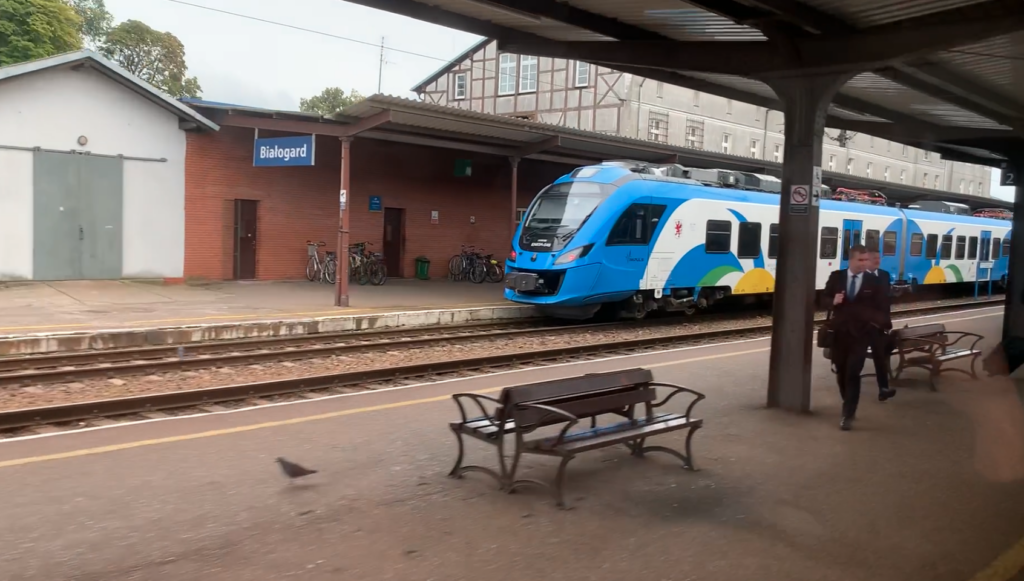

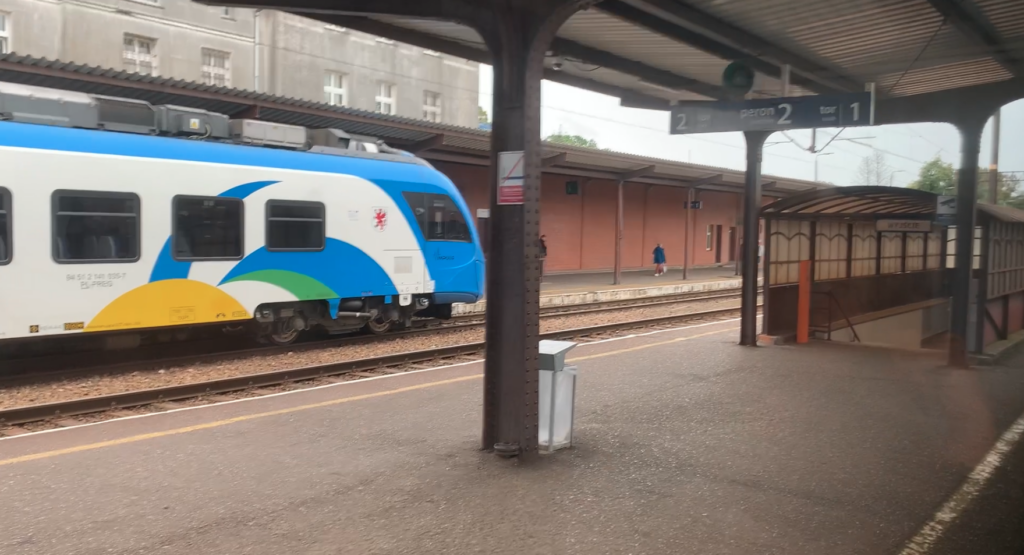

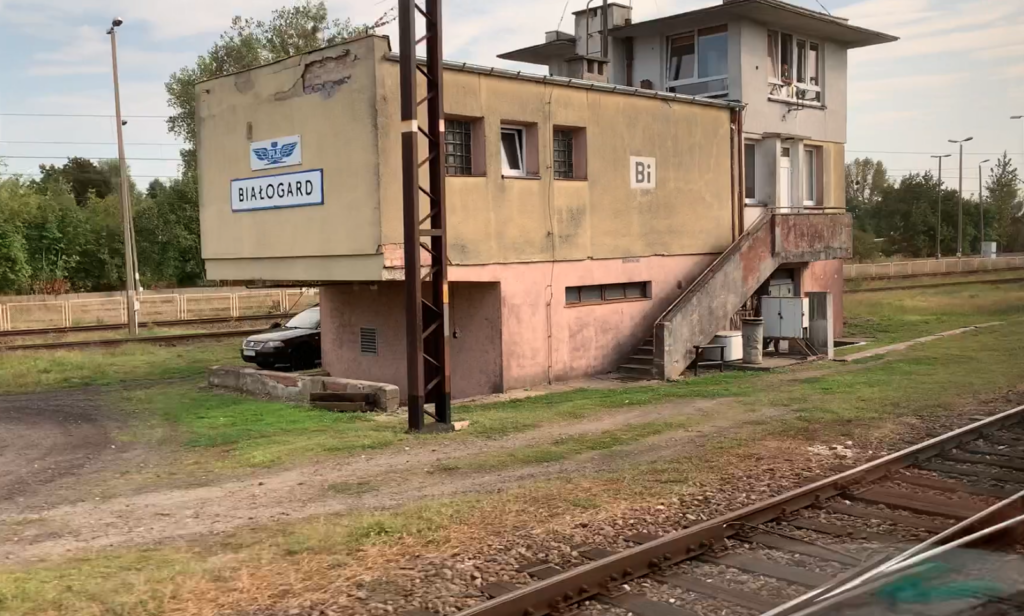
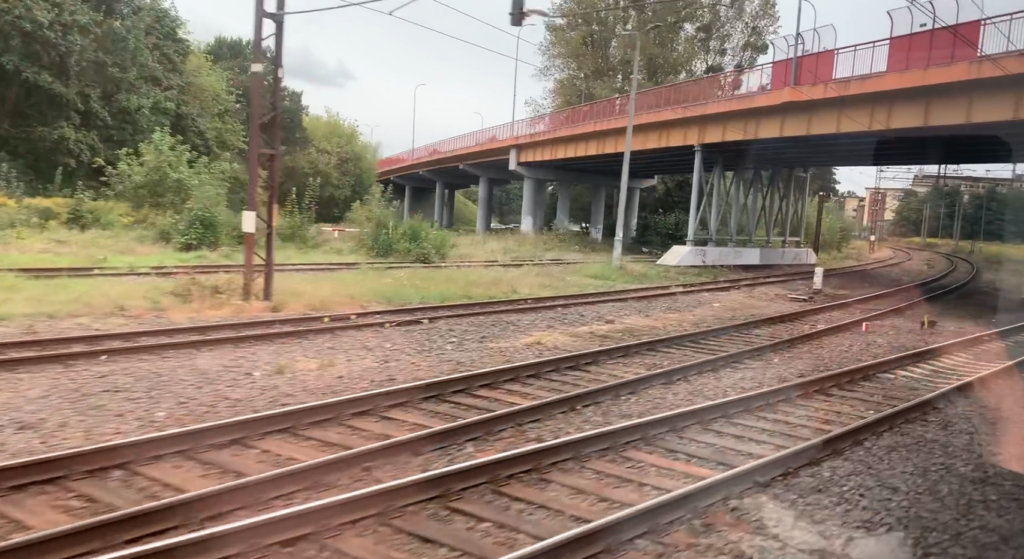
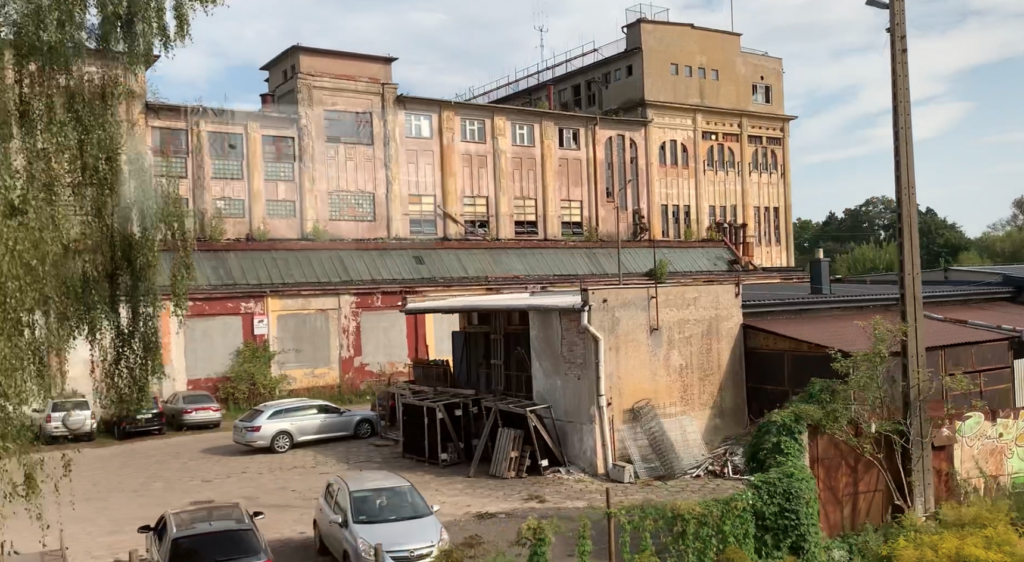
The city of Białogard.
Białogard is a city located in northwestern Poland, in the West Pomeranian Voivodeship. Białogard is located near larger cities such as Koszalin and Kołobrzeg. The city is located on the Białogard Plain, on the Parsęta River and the smaller Liśnica River. The city’s area is 25.73 km2. From Białogard to the city: Koszalin is 29 km, Kołobrzeg is 37 km, Szczecinek is 65 km, Szczecin is 135 km, Gdańsk is 202 km, Warsaw is 435 km. Currently, Białogard has 22,561 inhabitants (2023) and is known for its agricultural activities, processing industry and trade.
The history of Białogard dates back a thousand years, and the first mentions of the settlement date back to the early Middle Ages. The name “Białogard” means “white stronghold” or “white city” and refers to its origins as a fortified settlement. Białogard was founded as a Slavic defensive settlement and quickly became an important center in the Pomeranian region. The city was granted city rights on August 2, 1299, which contributed to its development as a trade and economic center. The location rights were granted by the Pomeranian Duke Bogusław IV, according to the principles regulated by Lübeck law. Due to its location, Białogard played a key role in local conflicts, including the wars between the Kingdom of Poland and the Teutonic Order. The city belonged to the Hanseatic League. After World War II, Białogard returned to Poland after a period under Germanic control, which brought about population, social and cultural changes. For a short period after World War II, the city was called Białogard. The current name Białogard was introduced by the regulation of the Ministers of Public Administration and Recovered Territories of May 7, 1946.
In the 19th century, the city industrialized. In 1815, the first post office with a stagecoach mail was opened. In 1853, the first newspaper began to be published. In 1859, the first standard-gauge railway line was brought to Białogard from the Stargard side. In 1866, the first telegraph station was opened. In 1868, the first secondary school was founded; a grammar school. From 1875, construction of a gasworks began, and then in 1898, 130 gas street lamps were launched. In 1896, a telephone line was launched, and the telephone exchange was installed in the post office building.
In the 20th century, Białogard continued to industrialize. In the period 1900–1901, new barracks were built, today’s Kołobrzeska Street. In 1905, a new town hall was built. In 1905, the narrow-gauge railway was opened; Białogard – Bobolice. In 1906, construction of the municipal sanitary sewage system began. On September 27, 1910, a municipal power plant with a steam power plant, with a capacity of 6 MW, was launched. The target was to be 18.29 MW. In 1911, the electrification of the city began (with alternating current). In 1927, construction of the district hospital began. In 1927, construction of the water supply network, water tower was completed and the sewage treatment plant began operating. In 1928, a vocational school for male youth was opened. In 1935, barracks were put into use at today’s Zwycięstwa Street. In 1936, construction of further barracks began at today’s Szosa Połczyńska and a military hospital at today’s Fryderyka Chopina Street.
During World War II, several camps for forced laborers and prisoners of war were located in the city and its surroundings. On March 5, 1945, Soviet troops and a unit of the Polish People’s Army entered Białogard. The Soviets spared the city a lot, because they planned to place their military occupation units here, in new barracks. The Red Army Command placed a strong garrison of troops in the city, which was stationed here until 1993. The Soviets had barracks, training grounds, shooting ranges, and even their own cemetery in Białogard. Until 1993, three large military units were stationed in Białogard. The post-Soviet and post-Germanic buildings were renovated and converted into apartments, schools, kindergartens, cultural institutions, and offices.
The Polish population that came to these areas, in Białogard, opened factories abandoned by the Germans. The communists did not include Białogard in the development plan, i.e. in the so-called 6-year plan, which caused the city’s development to regress. In 1956, 1960 and 1965, new primary schools were built in the city. In the 1970s, Białogard was a significant center of the electronics industry, there was a branch of the Warsaw Radio Works “Rawar” here, later transformed into a new plant “Unitra-Eltra”. The plant operates to this day under the name “Unicon”. The plant occupies the former buildings of the municipal power plant. The Power Plant in Białogard (Überlandzentrale Belgard) was founded on September 27, 1910. The basis for its activity was a power plant with a steam power plant, built in Białogard in 1911, with a capacity of 6 MW. In the period 1911-1912, the Heyka hydroelectric power plant was built on the Radew (Radue) River in the town of Niedalino (Wasserkraftanlage Nedlin), with a capacity of 2.4 MW.
Near Białogard, in the forests near the town of Podborsko, in the period 1970-1993, one of the Soviet nuclear weapons depots operated on the territory of Poland. Poland had to build three such bases for the Muscovites; marked 3001, 3002, 3003.
In Białogard there is; a glued board production plant, a grain and milling plant, an electronics production plant, as well as grain and grass production plants. In Białogard, there is bus transport operated by ZKM Białogard and private transport companies; BUSY.
The most valuable monument in Białogard is the Roman Catholic Church of the Nativity of the Blessed Virgin Mary. The building is Gothic and dates from 1310.
Białogard Railway Station.
The history of the railway in Białogard dates back to the 19th century and is an important element of the development of the city and the region. Thanks to Białogard’s location at the intersection of important railway lines, the city became one of the key railway junctions. The first train to the Białogard station arrived on June 1, 1859, from the direction of Stargard. In the mid-19th century, Białogard also received a rail connection with Szczecin, Koszalin (1859) and Kołobrzeg (1859) and Szczecinek (1878) and further to Piła and Poznań.
In 1911, two narrow-gauge railway lines were launched: Białogard – Bobolice and Białogard – Rarwino (Białogard Commuter Railway). The railway operated until the 1990s of the 20th century.
In the period 1857-1860, a very large station building was built at the station, for those times. The building survived to the present day only because architects from Moscow did not take care of it. The station building was built using the traditional half-timbered technique and is a reminder of the rich history of the region. The Prussian wall, also known as a half-timbered wall or half-timbered construction, is a form of a frame wall in which the frame is made of wooden beams and the space between the beams is filled with bricks. Its shape and appearance are far from other stations in the Pomeranian Lake District. In Białogard, more attention was paid to the practicality of the building, neglecting the external appearance. In addition, other stations in the region were built 30-40 years later. The building has two main storeys and a developed attic. The southern wing is four-storey and also houses apartments. The building has a basement. From the very beginning, there were three waiting rooms-buffets in the interior, for each ticket class; 1, 2 and 3. From the station square, there is a representative roofed entrance. A large clock with a white face was installed in the front of the building. The same clock was placed on the side of the tracks. The roof is a gable roof with a small slope, which is covered with copper sheet, which perfectly protects the structure. The roof over the main entrance and over the southern wing looks slightly different. The square in front of the station was paved at the end of the 19th century. Throughout its history, the station has been slightly modified. The main entrance changed, and a type of orangery was added. The location of the clock also changed. It was moved from the top of the elevation directly above the entrance.
The station has three platforms. Platform 1 is single-edged. Platform 1 was roofed at the end of the 19th century. Its construction is made of cast iron. Platforms 2 and 3 are island platforms and each of them has two platform edges. The platforms were roofed after 1915. Previously, only the tunnel exits were roofed. Platform 2 is 410 m long, and Platform 3 is 360 m long. The platforms are not high; about 0.35 m from the railhead. The platform roofs were renovated around 2005 and covered with trapezoidal sheet metal. On Platform 2 it is 85 m long, and on Platform 3 it is 70 m long. On Platforms 2 and 3, there are shelters above the tunnel stairs, because the main roof is short. On Platform 3, there is one of the railway signal boxes; “Bi2”.
In the period 1895-1905, a tunnel was built at the station for travelers, which connected Platform 1 with Platforms 2 and 3. Identical tunnels were built at the Runowo Pomorskie and Świdwin stations. Currently, the stairs are accessible to people in wheelchairs, because they are equipped with handrail lifts. The interior of the tunnel, walls and ceiling are lined with trapezoidal sheet metal, and the floor is lined with ceramic tiles.
The beginning of the 20th century was a time when the number of Germans traveling to the Muscovite brothers increased. Privately, caviar, gold, jewelry, sheepskins and other products made of leather and fur were brought. Fur muffs were popular. People traveled to the areas of present-day Belarus for hunting. The railway enabled the development of trade and industry in Białogard and the surrounding area, especially the agricultural and food industry. Thanks to access to the railway network, local goods could be exported over longer distances. The city developed around the station, which attracted entrepreneurs and employees associated with the railway.
The station had two locomotive sheds in its history. The first locomotive shed, called the small one, was located on the eastern side of the tracks. There was a rectangular, three-station locomotive shed there. The second locomotive shed is on the western side of the tracks. There is a large fan-shaped shed (20 stands) and a turntable. Currently, the locomotive shed is used for other purposes and is in very good technical condition. The station had a front-side ramp, storage yards, warehouses, a wagon scale (until 1978, with a lifting capacity of 42,000 kg), and a gauge. In 1915, there were already two water towers at the Białogard station, south and north of the station. The northern tower was dismantled in 2012, and the southern one was dismantled in 2013.
In the 1950s, a footbridge was built over the tracks in the northern part of the station. Of course, the tunnel was still used. The footbridge over the tracks served not only passengers, but also employees of two locomotive sheds; on both sides of the track.
In the southern part of the station, a road viaduct runs over the tracks; Kołobrzeska Street, DW No. 163. The viaduct was built in 1975-1976. The structure is made of steel and concrete, is 239.74 m long and 12.4 m wide.
In the 1980s, the Białogard junction was electrified with 3 kV DC. And that was all four routes that left Białogard. On December 15, 1987, the first electric train entered the station. There are railway signal boxes at the station; “Bi”, “Bi1”, “Bi2”.
Currently (2024), Białogard still serves as a local railway junction, and its station serves connections with larger cities such as Szczecin, Koszalin, and Kołobrzeg. The railway in Białogard is a testimony to the technological and historical development of the city and reminds of its former importance as a central transport point in the region. According to the PKP classification, the station has the category of a regional station. In 2021, Białogard station served 438,000 passengers during the year, and in 2022, 574,000 passengers. In 2024, from Białogard you could travel to the following stations: Białystok, Bielsko-Biała, Bydgoszcz, Ełk, Gdańsk, Gdynia, Gliwice, Katowice, Kołobrzeg, Koszalin, Kraków, Lublin, Lubliniec, Łeba, Olsztyn, Ostrów Wielkopolski, Piła, Poznań, Przemyśl, Racibórz, Rzeszów, Słupsk, Stargard, Szczecin, Szczecinek, Świdwin, Ustka, Warsaw, Wrocław. On November 12, 2024, 54 passenger trains departed from the station. Among the trains were InterCity trains; 81104 RYBAK, 84102 SZYNDZIELNIA, 85100 ALBATROS, 84100 GWAREK, 3806 MALCZEWSKI, 699 ZAMOYSKI (substitute communication), 85108 STAŃCZYK, 85102 ŻUŁAWY, 85106 GRYF, 85104 BRYZA, 48100 GWAREK, 68102 SZKUNER, 58100 ALBATROS, 695 PRZEMYŚLANIN (substitute communication). Substitute communication was on the Białogard – Szczecinek line due to line repairs.
Railway Line No. 202 Gdańsk Główny – Stargard.
LK No. 202 Gdańsk Główny – Stargard runs through Świdwin station, which stretches in the northern part of Poland, in the latitudinal direction and runs through the Pomeranian Voivodeship and the West Pomeranian Voivodeship. LK No. 202 has a length of 334.363 km. The line is electrified with 3 kV DC. The maximum speed of the train is 140 km/h. The line is single-track and double-track. Białogard station is located on 222.634 km of the line. Launch of the railway line; 1859.06.01 Stargard – Koszalin. 1869.07.01 Koszalin – Słupsk. 1870.09.01 Słupsk – Gdańsk Główny. Construction of the second track; 1909, Lębork – Słupsk. 1909, Białogard – Runowo Pomorskie. 1902, Runowo Pomorskie – Stargard. In 1945, the second track was dismantled by the Soviets. 1953, Runowo Pomorskie – Chociwel. 1955, Chociwel – Ulikowo. By 2024, it had not been possible to rebuild the second track on the entire LK No. 202. Electrification was carried out in stages; 1969.09.13 Gdańsk Główny – Gdynia Główna. 1969.10.19 Rumia – Wejherowo. 1989.09.06 Wejherowo – Słupsk. 1988.12.02 Koszalin – Słupsk. 1988.06.30 Białogard – Koszalin. 1987.12.15 Świdwin – Białogard. 1987.07.15 Runowo Pomorskie – Świdwin. 1986.12.16 Stargard – Runowo Pomorskie.
Railway line No. 404 Szczecinek – Kołobrzeg.
Railway line No. 404 Szczecinek – Białogard – Kołobrzeg is a route located in the West Pomeranian Voivodeship. The line runs from the south-east to the north-west. LK No. 404 is 99.803 km long. The line is single-track and electrified with 3 kV DC. The maximum speed is 100 km/h. The line is of national importance. The line runs along the Parsęta River, but does not cross it. Białogard station is located at 63.521 km of LK No. 404.
Written by Karol Placha Hetman
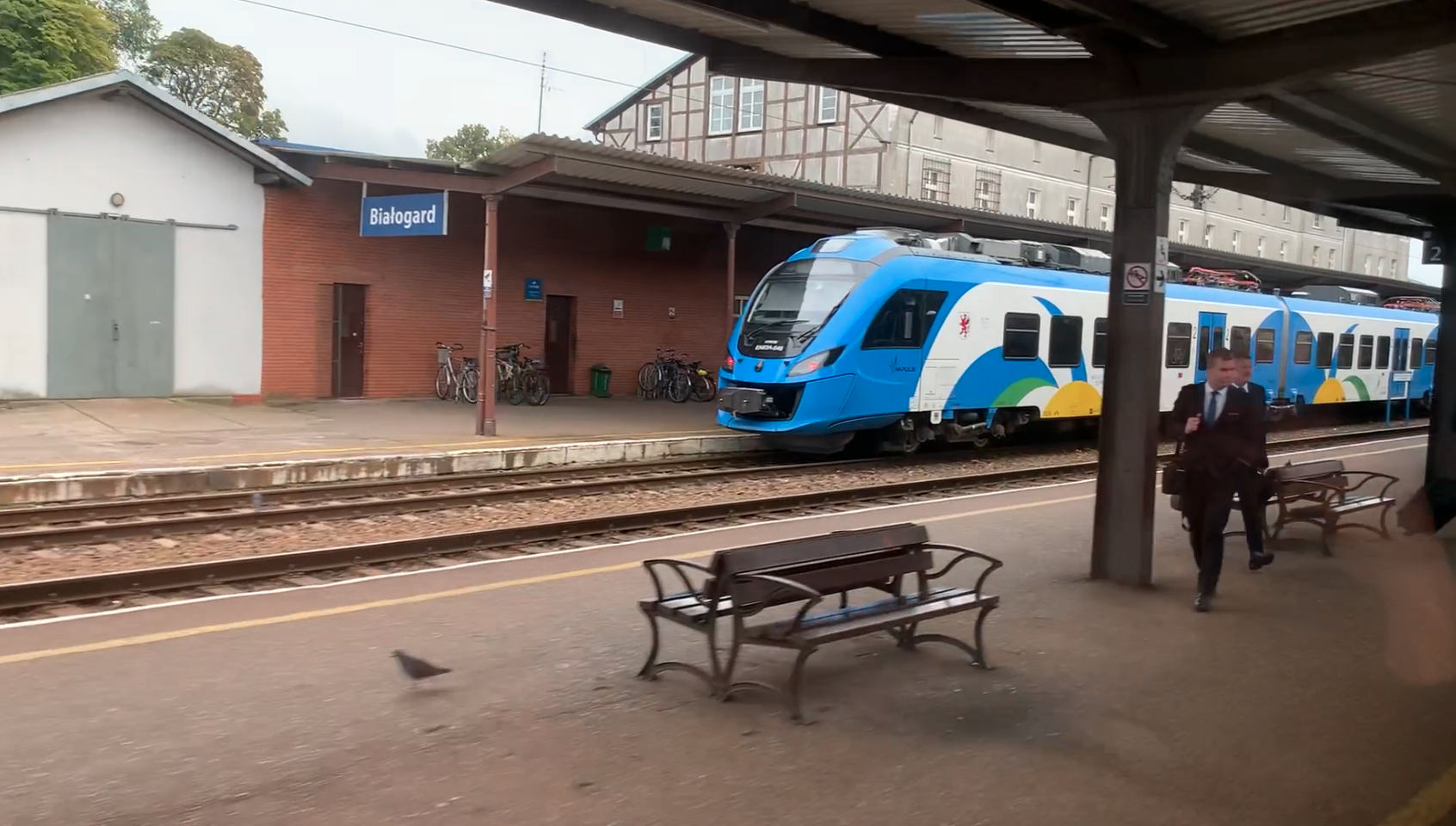
Leave a Reply
You must be logged in to post a comment.